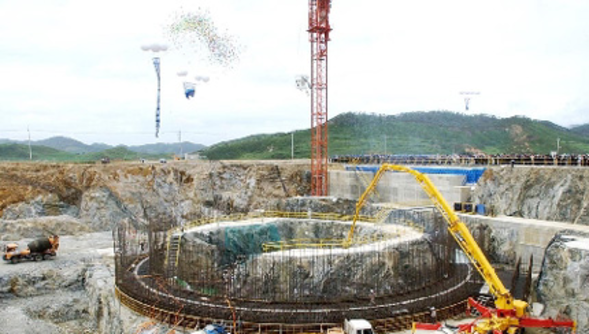Input 2021.02.01 20:30
② DMZ nuclear power plant? “Where do you get the water? You can’t even do a basic site survey”
③ Shinhanul to North Korea? “North Korea’s transmission grid is messed up, trillions of won stretchers”
In response to the “North Wonchu (North Korean Nuclear Power Plant Promotion Plan) Scenario,” which is known to have been reviewed by the Ministry of Trade, Industry and Energy after the April 27 inter-Korean summit in 2018, nuclear experts are responding that it is a science fiction-like idea that is less likely to be realized.
It is reported that on December 1, 2019, prior to the audit of the Board of Audit and Inspection for the early closure of Wolseong Unit 1, the secretary A, from the Nuclear Industry Policy Division of the Ministry of Industry, deleted 17 reports related to North Korean nuclear power plants. Among them, the document’Promotion of Nuclear Power Plant Construction in North Korea’ includes ▲A plan to build a nuclear power plant at the site where the Korean Peninsula Energy Development Organization (KEDO) was planning to build a light water reactor ▲A plan to build a nuclear power plant in the DMZ ▲Shin Hanul 3 It is known that the plan of completing Unit 4 and transmitting power to North Korea was suggested as a plan to support North Korean nuclear power plants.

First of all, it is a plan to build a nuclear power plant in the Geumho district of Sinpo-si, North Hamgyeong-do, North Korea, where KEDO, proposed in the first proposal, stopped trying to build a light water reactor in 2001-2006. The reason why this plan was considered as the first plan seems to be that construction can be started as soon as possible, with a large part of the site construction work that KEDO promoted to construct the nuclear power plant.
However, the situation in which North Korea violated international agreements on denuclearization is raised as the biggest obstacle. Professor Hwang Il-soon of Seoul National University said, “With North Korea breaking through all (international nuclear agreements), North Korea’s nuclear support will be difficult unless it is coordinated with the United States, the International Atomic Energy Agency (IAEA), and KEDO partners.”
Prof. Yong-Hoon Chung also said, “In order to begin, North Korea must return to the Non-Proliferation Treaty (NPT). This is to prove that North Korea has no nuclear weapons. To do this, the (international society) You have to verify that there is no. It’s an impossible story, and it’s not worth trying.”
The reaction was even more absurd about the construction of the nuclear power plant in the DMZ, which was the second proposal. It is pointed out that this is a dream-like story in a situation where there is no research on the basic power plant site. Chung Dong-wook, a professor at Chung-Ang University, said, “The location of the power plant should be based on a number of things, such as water.” “He said.
Professor Jeong said, “In Korea, from the project plan to completion, it takes 9 years, of which the project preparation period is 2 to 3 years, and after that, I apply for a construction permit.”
The last proposal, Shinhanul 3 and 4 after the resumption of construction, appears to have been reviewed in that it is the fastest way to proceed in terms of’energy supply using nuclear power’.
However, it is the same condition that the consent of the international community is required. However, even if the project proceeds through this process, the cost of transmission facilities at an astronomical level is another challenge. In particular, in order to use electricity sent from the south, it is necessary to modify the North Korean internal power grid, which incurs additional costs.
Professor Jeong Yong-hoon said, “North Korea’s power grid is so messed up that we can’t just take it and write it.”
Professor Jeong Dong-wook said, “Due to the different frequencies between the two Koreas, there will be losses even when converting them, and there will be a lot of transmission losses due to the poor power grid in North Korea.” The electrical frequency used in South Korea is 60Hz. On the other hand, North Korea is 50Hz. This originated from the difference between the American-style (60Hz) and European-style (50Hz) generators introduced when starting the initial electricity business. Professor Jeong Dong-wook said, “If you build a power plant in Korea, it will take at least 200 billion to 300 billion won for the transmission network,” he said. “If you provide a transmission network to North Korea, it will take hundreds of billions to trillions of won.”
